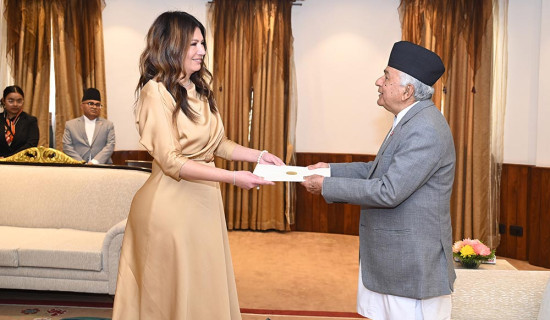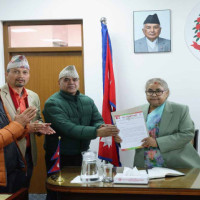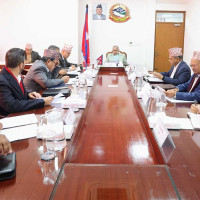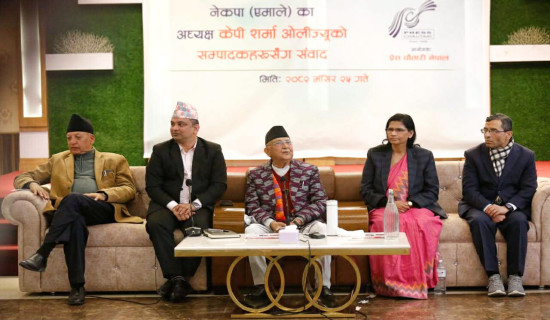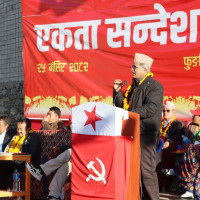- Thursday, 11 December 2025
Nepal set to make millions through carbon trade
Kathmandu, Jan. 5: They say that money does not grow on trees, but Nepal is proving it wrong as it is poised to make significant financial gains through its forests.
From its forests of 13 Tarai districts from Rautahat to Kanchanpur, Nepal is going to receive around US$ 10 to 11 million within six months, the first payment from selling carbon credits from trees, commonly called carbon trade, said Yagyamurti, Under Secretary at REDD+ Implementation Centre of the Ministry of Forest and Environment.
Carbon trade from trees is a way for companies and countries to balance their carbon emissions by planting and managing trees. It is like they earn points for reducing pollution, and if they have extra points, they can sell more carbon emitters and receive money out of it.
Under the Carbon Trade Agreement inked between the government of Nepal and the World Bank on February 24, 2021, the Emission Reduction Plan Document (ERPD) is being achieved over a span of six years from 2018 to 2024 in 13 districts of Tarai Arc Landscape (TAL). The implementation of ERPD aims to curb 9 million tonnes of carbon dioxide emissions in the Tarai Arc Landscape.As per the agreement, the government submitted its initial Emission Reduction (ER) monitoring report to the World Bank.
This arrangement launches two reporting periods for performance-based payments, highlighting the commitment to sustainable forest management and emission reduction goals in Nepal.
According to Khanal, the WB has passed on the report and sent it to a third party for verification. “We have been conducting online meetings with the third party, they may visit the field for measurements before giving us a certificate. Once the report is verified, we will obtain a certificate from the third party. The certificate is the means to receive funds. We have a six-month window to secure the first instalment from our forest,” he said.
On June 22, 2018, the government started a programme called “People and Forests - A Sustainable Forest Management-Based Emission Reduction Programme in the Tarai Arc Landscape”. After giving a plan called ERPD to the Forest Carbon Partnership Facility (FCPF) on May 23, 2018, Nepal’s plan was accepted in a meeting in Paris on June 20-22, 2018, and is now part of the Carbon Fund Portfolio.
“The programme is a mirror of how much the country cares about fighting climate change and adopting eco-friendly measures. Teaming up with the World Bank, Nepal is working to make its future greener and more environmentally friendly,” Khanal added.
Tarai districts were chosen because the forests in the region play a crucial role in climate resilience by providing essential ecosystem services, including watershed protection and mitigating droughts and floods. It will safeguard forests inseparably connected to the
well-being of numerous communities in the region and across the country, he said.
Nepal has not earned money from carbon trade from its forest yet, but in 2009, the World Bank had provided $10 million for capacity development.
During COP26 in Glasgow, Nepal government signed a letter of intent with the LEAF Coalition for another carbon trade initiative. According to the agreement, the government will sell 30 million tonnes of CO2e for $10 per tonne between 2022 to 2026, focusing on Bagmati, Gandaki, and Lumbini Provinces,” Khanal said. Work is under way as per the agreement, he informed.
REDD+ in Nepal
Nepal has been actively involved in the implementation of REDD+ (Reducing Emissions from Deforestation and Forest Degradation) initiatives. REDD+ is a global effort aimed at mitigating climate change by reducing greenhouse gas emissions from deforestation and forest degradation, promoting sustainable forest management, and enhancing forest carbon stocks.
The programme is also to increase livelihood assets, food security and diversify employment opportunities of forest-dependent people, particularly the poor and marginalised.
REDD+ is a plan made by the United Nations to help countries take care of their forests. The goal is to stop cutting down too many trees, keep the forests healthy, and manage the land in a way that’s good for the environment.
To reach the goal set by the United Nations, Nepal has implemented various tasks. The government made the existing community-based forests better, provided national forests for communities to take care of, and supported private forests. The programme has also been implemented in about 30,000 hectares of private forests in 13 districts.
The ER Programme in the Tarai has a goal to reduce deforestation and forest degradation over 2.4 million hectares of land, which holds 20 per cent of Nepal’s forest cover.
The majority of the first instalment funds will be directed to the local level to manage forests, including community forests, partnership forests, and national forests. The draft for fund distribution has been formulated and forwarded to the Ministry of Finance for approval. Khanal stated that funds from the World Bank will be received during this period.
“For the second instalment, the government plans to submit the report in 2025 and expects to receive the funds by the end of that year,” he added.
Nepal currently has 44.74 per cent of its land covered by forests and wooded areas. The Second Nationally Determined Contributions (NDC) outline the government’s goal to maintain 45 per cent forest cover (including less than 4 per cent wooded land) across the country by 2030.
The plan also targets sustainable management of 50 per cent of Tarai and Inner Tarai forests, along with 25 per cent of middle hills and mountain forests, by 2030, with support from REDD+ initiatives.
Nepal’s annual per capita carbon emission is among the lowest globally, standing at 0.29 tonnes.



